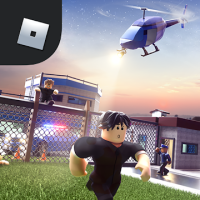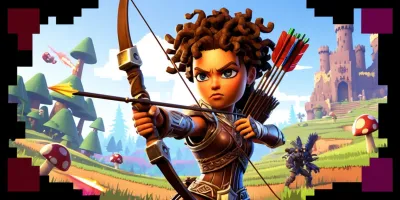Another Axiom Inc.
Boundless Movement: Exploring the Art of Virtual Acrobatics in Gorilla Tag
Discovering a New Playground
I first encountered Gorilla Tag during an impromptu session with a few friends and found myself immediately captivated by the unconventional movement mechanics. Stepping into the virtual world, I was struck by the simplicity of the concept and how it transformed my perception of virtual reality experiences. Unlike many other games that rely on standard movement controls, this one turned my arms into my primary mode of transportation. I felt surprised yet invigorated as I realized I was no longer a passive participant; I was an active explorer swinging, leaping, and climbing my way across a digital jungle gym.
Excitement in Every Swing
The joy of gliding through the air using only my arms is something I never expected to experience in a game. Every swing required focus, a bit of acrobatics, and trust in my own reflexes. I was constantly challenged to coordinate my actions, looking for the right surfaces to launch myself from and accidentally discovering innovative techniques to extend my momentum. This feeling of continuous motion brought a fresh approach to immersive gameplay. It is not merely about reaching a destination but rather about experiencing the playful nature of each leap and bound.
The Art of Movement and Navigation
One aspect that stands out is how the game redefines what it means to anticipate and plan movements. The minimalist design and sparse environments prompted me to rely solely on physical intuition. It wasn’t just about passing obstacles; it was about embracing the intricacies of each motion. I learnt to anticipate my trajectory and adapt quickly, a process that kept both my body and mind fully engaged. This unique form of locomotion enriched my relationship with the virtual environment by making every moment a blend of strategy and physical agility.
Innovative VR Interactions
Gorilla Tag has reimagined interaction by relying on the simplicity of natural hand movements. I was struck by the fluid translation of my real-life actions into the virtual space. The game’s focus on non-traditional controls meant that every gesture felt significant. I enjoyed the challenge of mastering the physics behind the game, while the VR headset created a seamless loop between my actions and their consequences in the digital realm. Each leap felt gratifying, as though the game was rewarding proper synchronization between my perception and the actions I executed. The connection felt almost instinctive, as if the game was a natural extension of my body.
Connecting in a Community of Adventurers
The multiplayer mode injected a deep sense of camaraderie into my experience. I was often paired with friends or spontaneous strangers, creating an environment where shared thrills and laughter flourished. It was amazing how our individual styles of movement could blend into a dynamic interplay, turning each session into a unique and unpredictable experience. The social element provided an added layer of challenge while highlighting the freedom to express oneself through motion. I also found it fascinating to observe different techniques and approaches, each rooted in diverse perceptions of movement and interaction.
Immersive Visual Aesthetics and Playful Design
The game’s visual style embraced simplicity without sacrificing charm. I appreciated the clean, low-polygon aesthetic that perfectly complemented the energetic pace of play. The environments, often rendered in a style that emphasized bold colors and easy-to-distinguish structures, made navigation feel intuitive. These visuals not only helped in identifying climbing surfaces but also added a subtle sense of humor, as if the world was designed with the idea of play in mind. Every detail, from the background textures to the character’s agile movements, contributed to an overall atmosphere that was minimalistic yet captivating.
Rhythms and Resonance of Soundscapes
The auditory experience in Gorilla Tag was equally engaging. I found that the sounds, from the swoosh of my movement to the ambient echoes of natural surroundings, reinforced the sense of presence. There was a raw beauty in the way the audio responded to my actions, creating an almost musical undertone to each leap and landing. The sound design wasn’t overwhelming but managed to enrich the immersive quality of the environment. It was as if every movement I made was carefully synchronized with a sound cue, enhancing the feeling that I was truly part of a living, breathing virtual habitat.
Physical Engagement and Active Play
One of the most striking aspects of the experience was its physicality. Gorilla Tag transformed my living room into a space for active play, demanding that I stretch, dive, and use my entire body in a way I rarely do during typical gaming sessions. I realized that I was physically engaged in ways that modern video games seldom encourage. The combination of VR immersion with untethered, bodily movement provided a sense of vitality and freedom. Every session was like a workout, yet it never felt like a chore because the joy was in the spontaneous freedom of movement and the challenge of mastering each swing.
Exploring Varied Terrains and Obstacles
Within the game world, I quickly discovered that the interplay between different terrains significantly enriched the experience. There were parts that encouraged a careful approach with strategic movements, while other zones invited rapid, freeform action. I found the unpredictable layout of natural features to be both taxing and rewarding. It instigated a need to observe my surroundings meticulously, adapting to each new scenario with a sense of urgency and experimentation. Each level of terrain felt meticulously crafted to challenge my coordination, intuition, and creativity, making every session a fresh exploration of virtual landscapes.
Dynamic Challenges and Engaging Rewards
The game continuously threw unexpected challenges my way, from tricky paths to sudden gaps that required perfect timing. I relished these tests as they pushed me to refine my technique further. Rather than presenting a linear progression, the game rewarded experimentation and adaptation. I began to perceive each obstacle not as a hurdle, but as an opportunity to innovate my approach. These spontaneous moments of discovery instilled a constant sense of achievement whenever I managed to navigate a particularly complex sequence of moves. It was stimulating to feel my reflexes sharpen and my understanding of the physics deepen with every session.
Fluid Physics and Technical Prowess
The heart of Gorilla Tag’s gameplay lies in its robust physics engine, which I found commendable for its responsiveness and realism. Every action felt calculated and natural, reinforcing the connection between my physical movements and their digital counterpart. I appreciated how the developers managed to balance the demands of a physics-based system with the accessibility of the game. The reliability of the dynamic responses, even during the most frantic chases or rugged maneuvers, underscored the technical expertise behind the project. This solid foundation allowed me to immerse myself fully in the game's challenges without getting bogged down by unpredictable glitches or lags.
The Innovative Use of Space in VR
Immersing myself in Gorilla Tag was like entering a three-dimensional playground where every corner invited new possibilities. I observed how the game creatively manipulated space to enhance interaction. Whether it was the high jumps required to reach an elevated platform or the rapid bursts of arm-powered propulsion when escaping a pursuing friend, every spatial challenge seemed to be thoughtfully positioned to encourage exploration. The game continually made me aware of the vast potential living within a virtual area, urging me to push the boundaries of what I could do while safely confined within my play area. The spatial design turned each session into a comprehensive exploration of not only virtual mechanics but also my physical capabilities.
Refined Mechanics and Adaptive Learning Curve
Every time I played, I discovered nuanced details in the movement mechanics. It became clear that the game was designed with both novice players and seasoned veterans in mind. I fondly recall those early moments of fumbling while trying to gain control over my movements, which gradually evolved into a refined set of skills as I learned the intricacies of momentum and balance. The adaptive learning curve encouraged patient experimentation; even when I was struggling to execute a precise maneuver, the incremental improvements taught me the importance of persistence and practice. The result was a trial-by-trial narrative where each progressive session felt like an achievement on its own.
Unexpected Moments of Pure Joy
There were several moments throughout my time with Gorilla Tag that left me with a profound sense of exhilaration. I remember the sheer delight of performing an unexpected arc or achieving a seemingly impossible distance with just a few well-timed swings. These instances of serendipitous mastery provided an unmatched thrill. They were not scripted achievements but rather organic outcomes of my growing comfort with the game's mechanics. The spontaneity of these moments reminded me that playfulness and discovery are at the heart of this experience, each swing leading to an unfolding narrative of joyous physicality and personal triumph.
The Striking Balance Between Simplicity and Depth
What truly impressed me about Gorilla Tag was its ability to harness a simple concept and expand it into a complex, layered experience. On the surface, the mechanics might appear straightforward, but every session revealed layers of depth that compelled me to think, adapt, and experiment. I often found myself developing new strategies, blending speed with precision, and even exploring unconventional routes through the intricate environments. This delicate equilibrium between simplicity and depth fostered a sense of mastery that I had seldom experienced in other virtual adventures. It was a reminder that sometimes the most profound experiences emerge when basic ideas are executed with passion and innovation.
The Joy of Continuous Exploration
During my time immersed in Gorilla Tag, I experienced a continuous sense of exploration that stretched both my mental and physical capabilities. Every environment, every obstacle, and every interaction was a reminder of how versatile the virtual reality medium can be. I felt the excitement of uncovering new ways to navigate the digital landscape, whether by executing daring leaps or by discovering hidden shortcuts. The ever-changing dynamics of the game encouraged a mindset of perpetual learning, where each session felt like stepping into a new chapter of an interactive narrative. The thrill was in the journey rather than any predetermined outcome, which kept me engaged and eager to return each time.
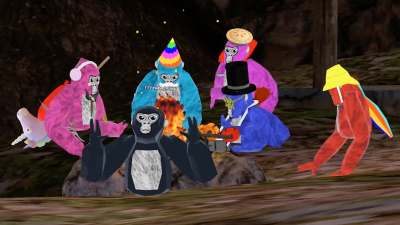
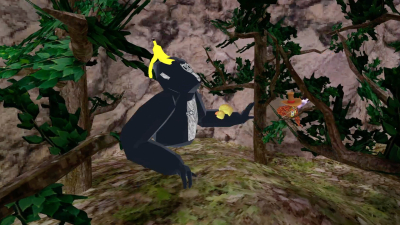
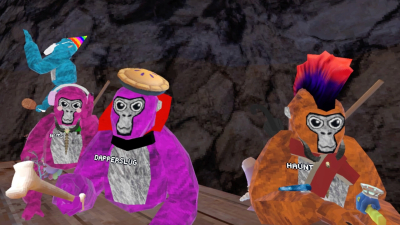

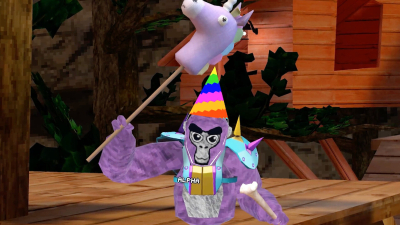

To download the app, you will get links to the Official Website and/or official digital markets.

